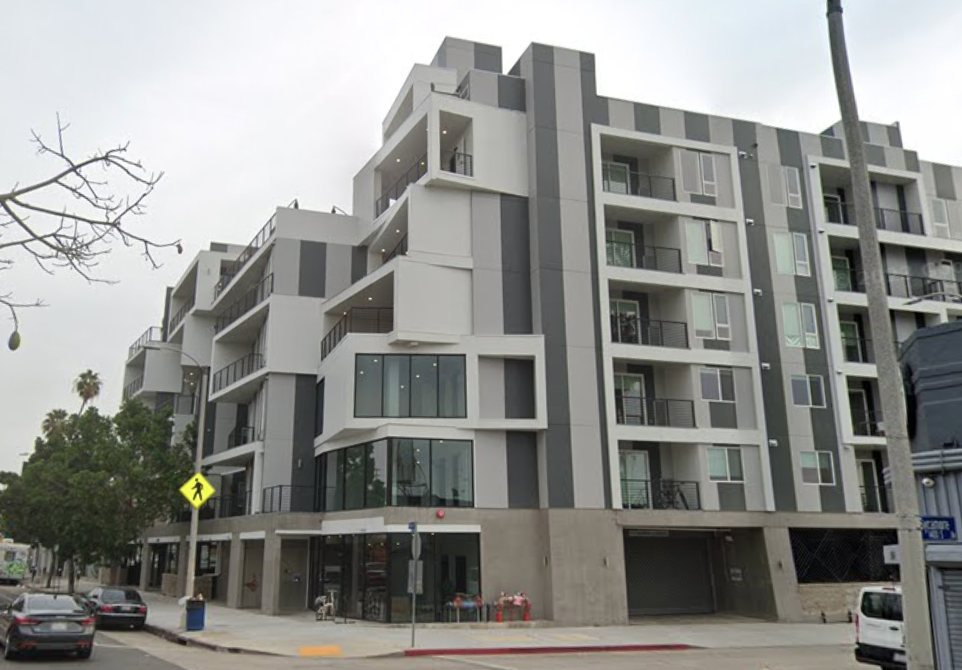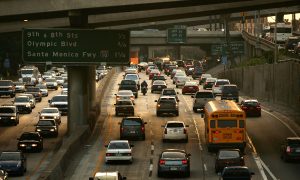Commentary
The City of Los Angeles has embarked upon an aggressive and novel plan: provide housing for all of the city’s homeless. The inherent problem with the plan is obvious: the more you provide, the more you incentivize homeless people to come. A recent investigation of the plan has also revealed that the project suffers from gross mismanagement and likely corruption.
The Westside Current media outlet on May 16 concluded an extensive investigation of the city’s efforts. It found that the city acquired 38 properties over the last few years to house the homeless, many of which it paid well over market price, and, astonishingly, sit empty today.
Why is L.A. in the process of becoming one of the city’s biggest landlords? Because of COVID-19, naturally. The acquisitions are pursuant to Project Homekey. According to Los Angeles County, the program was initially launched “to protect vulnerable residents from the COVID-19 pandemic.”
“Homekey makes grant funding from the state Department of Housing and Community Development available to cities, counties, housing authorities, tribal entities and other local public entities to acquire and then convert hotels, motels, multi-family apartments, and more, into permanent or interim housing,” it stated.
This falls under the left’s strategy to “never let a serious crisis go to waste.” The acquisitions are made by the city’s “Housing Authority.” The city not only purchases and operates the properties, but it also upgrades the buildings to provide on-site services and amenities.
Thus far, the investigation revealed, the city has acquired 2,750 housing units (condos, apartments, or hotel rooms) at a cost of more than $810 million, or about $300,000/unit. But, according to the investigation, around 44 percent of the units sit vacant.
The city fails at maintaining its streets, sidewalks, parks, sewage, power, beaches, and buses. Yet now it seeks to be a player in the commercial real estate, property management, and landlord business.
It should come as no surprise that the investigation revealed the city is way overpaying for the properties. Commercial real estate is a sophisticated business. Governments are in no position to compete with private companies which have been in the business for decades, with only the best surviving and the worst going bankrupt. The government has no expertise in this area. Further, such projects are ripe for political payoffs, fraud, and kickbacks.
The investigation revealed numerous suspect purchases. Westside Current reported one of the buildings purchased for $36.5 million at one point advertised “luxury” apartments on its website featuring “spacious, modern elegance” and “sweeping views of LA.” The website still currently boasts of units with balconies and a rooftop deck offering “stunning views of the Hollywood sign.”
Why is the city housing the homeless in luxury apartments in highly desirable neighborhoods? It’s not surprising to me, because I know how city leaders think. They believe housing should be acquired or built where the homeless people are. My former city councilman, Mike Bonin, proposed building oceanfront housing for the homeless. It would have taken hundreds of parking spaces away from residents who enjoy going to the beach. His rationale was “we need a broad menu of solutions—projects, programs, policies—and we need to put them in place all over the city.”
The investigation also discovered numerous examples of properties bought well over the asking price. In one example, the Housing Authority bought a new 34-unit building for $17.7 million, which is over $520,000 per unit. The broker represented both the Housing Authority and the developer-seller. According to the Current, the broker “subsequently boasted that it was the most expensive building ever sold in the zip code per square foot, per unit, and overall”!
The investigation also revealed that additional “luxury” buildings were acquired, yet still had to be upgraded or modified to accommodate homeless. For instance, they bought a hotel but then had to convert thirteen rooms into “program space (supportive service staff offices, property management staff offices, service provision areas, and a community room for activities)” and for “two, two-bedroom managers’ units.”
The investigation found that about 44 percent of all units acquired presently sit empty, often because they are awaiting renovations. For example, the investigation reports the Authority purchased a brand new 27-unit luxury apartment building for $11.2 million, yet 14 months later the building has never been occupied and the city is in the process of converting three units into “a laundry room, case management office, and break room for staff.” Of course, all such work must be done by union workers according to city policy.
Units are also likely to sit empty because a good percentage of homeless do not want housing. They have adjusted to life on the street and prefer the lack of oversight and rules. As long as the city continues to allow people to set up camps on the city’s beaches, parks, and sidewalks, they will continue to do so.
The Current’s investigation comes on the heels of a review of state spending on homeless by the California State Auditor’s Office. California allocated nearly $24 billion over the past five years for the homelessness crisis. The audit concluded, “The State lacks current information on the ongoing costs and outcomes of its homelessness programs, because [the California Interagency Council on Homelessness] has not consistently tracked and evaluated the State’s efforts to prevent and end homelessness.”
The spending has clearly been a failure. Despite the obscene spending, California homelessness has been going up every year, not down. Last year it was up another 6 percent to 180,000 people, making up 28 percent of the nation’s homeless population despite California having only 12 percent of the U.S. population. From 2012 to 2022, California’s homeless population increased by 43 percent, with L.A. County increasing by 106 percent. By way of comparison, Texas’s decreased by 28 percent over the same period, and Houston decreased by 57 percent.
The reason is obvious. The more you permit camping and cater to the homeless, the more you incentivize the behavior. While other states enforce no-camping laws, people leave those states to camp in cities like Los Angeles and San Francisco, which allow it. It’s set to get worse now that the word is out that if you camp in L.A., you are likely to be offered a brand-new loft with a view of the Hollywood sign.









